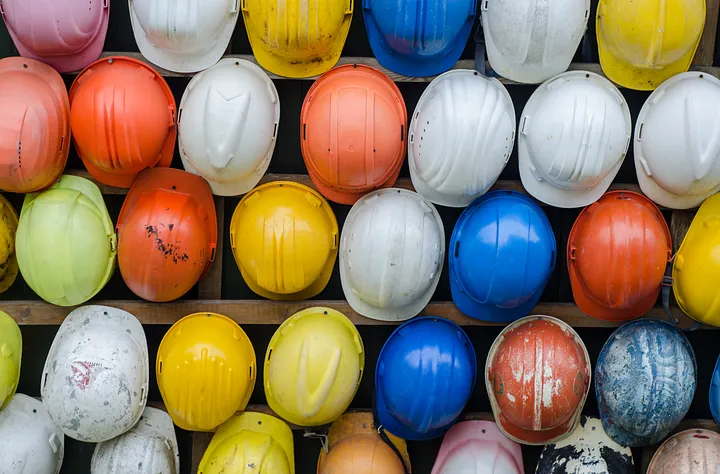Understanding the critical role of relief devices in pressure relief systems is essential for ensuring safe operations. This blog explores the right design of pressure relief valves, industry standards, and compliance requirements for effective relief device selection and installation.
What is a Relief Device, and Why is it Important in Industrial Settings?
Relief devices, like safety and pressure relief valves, are essential components in industrial settings. These devices are designed to automatically release excess pressure or vapor to prevent equipment failure, explosions, or other catastrophic events. By protecting workers and property, relief devices play an important role in the safe operation of industrial facilities.
Pressure Relief Valve Design and Industry Standards
Adherence to industry standards is required to ensure the safety and reliability of pressure relief valves. Key oil and gas industry standards and regulations governing the design, installation, and maintenance of relief devices include –
API (American Petroleum Institute) Standards
The American Petroleum Institute (API) is a leading industry association that develops standards for the oil and gas industry. American Petroleum Institute (API) standards provide guidelines for designing, fabricating, and installing various equipment, including pressure relief valves. Some API Petroleum standards include:
- API 520: Provides guidelines for the sizing, selecting, and installing pressure-relieving devices specifically for refineries.
- API 521: Covers the design of the pressure relief valve, its fabrication, and installation.
- API 526: Outlines inspection, repair, alteration, and rerating of pressure vessels.
RAGAGEP (Rules for the Design, Construction, and Inspection of Pressure Vessels)
RAGAGEP is a set of regulations that govern pressure vessel design, construction, and inspection. These rules are often based on international standards like ASME, OSHA, and API to ensure equipment safety and operational reliability.
ASME Boiler and Pressure Vessel Code
The ASME Boiler and Pressure Vessel Code is a comprehensive set of standards for the fabrication, inspection, and design of pressure valves, vessels, and boilers. Some standards include:
- Section VIII, Division 1: Covers the design and fabrication of pressure vessels.
- Section VIII, Division 2: Provides alternative rules for designing and fabricating pressure vessels.
National Board Inspection Code (NBIC)
The NBIC provides standards for inspecting, testing, and repairing boilers and pressure vessels. It ensures that these equipment are maintained in safe operating condition. The NBIC provides specific boiler pressure relief pipe regulation codes for various types of pressure vessels, such as:
- NBIC Class F: Covers inspection of power boilers.
- NBIC Class H: Covers inspection of heating boilers.
- NBIC Class R: Covers inspection of pressure vessels.
These codes outline detailed inspection procedures, including visual inspections, non-destructive testing, and hydrostatic tests.
ISO (International Organization for Standardization)
The International Organization for Standardization develops global standards for various industries, including the oil and gas sector. ISO standards regulate oil and gas industry safety standards by providing guidelines for selecting, installing, and maintaining valves. ISO 14414, for example, provides guidelines for selecting, installing, and maintaining safety valves for boilers and pressure vessels.
OSHA (Occupational Safety and Health Administration) Regulations
OSHA is a U.S. government agency responsible for ensuring safe and healthful working conditions. OSHA regulations cover end-to-end aspects of workplace safety, including designing, installing, and maintaining pressure relief devices. OSHA’s Process Safety Management (PSM) standard requires facilities to implement a comprehensive safety management system, including:
- Hazard identification and risk assessment
- Process safety information
- Employee training
- Mechanical integrity, including inspecting and maintaining pressure relief devices
Looking to improve safety and compliance? Learn more about our process safety management services today.
Types of Relief Devices
Pressure Relief Valves (PRVs)
Pressure relief valves are spring-loaded devices that automatically open when the system pressure exceeds a preset setpoint. They are commonly used in diverse industries, including power generation, oil and gas, and chemical processing. The design of pressure relief valves ensures the release of excess pressure, allowing for controlled venting.
Pressure Safety Valves (PSVs)
Pressure safety valves are similar to PRVs but typically designed for higher-pressure applications. They are often used in high-pressure steam boilers and other high-pressure systems. PSVs are designed to open quickly and fully to relieve excess pressure rapidly.
Rupture Disks
Rupture disks, also known as burst disks, are thin metal disks that rupture at a predetermined pressure. They are often used in conjunction with PRVs or PSVs to provide additional protection. Rupture disks offer a reliable and fail-safe mechanism for pressure relief, as they do not require any external power source to operate.
Best Practices for Installing Pressure Relief Pipe Systems
- Adhere to relevant codes and standards, such as ASME, API standards for oil, and local regulations.
- Ensure accurate sizing and designs of pressure relief valves, piping, and fittings.
- Accurately determine the required capacity of the relief device based on process conditions.
- Select appropriate piping materials and sizes to handle the flow rate and pressure.
- Consider factors like erosion, corrosion, and temperature when choosing materials.
- Install relief devices and piping systems according to the manufacturer’s instructions and oil and gas industry standards.
- Avoid sharp bends and unnecessary restrictions that can hinder flow.
- Conduct functional tests to verify the operation of relief devices and piping systems.
- Install isolation valves to maintain and test relief devices without shutting down the entire system.
- Use bypass valves cautiously, as they can compromise the system’s safety.
- Design discharge piping to safely direct the released fluid or gas away from personnel and property.
- Consider noise, vibration, and environmental impact when routing discharge piping.
Importance of Regular Testing for PRV Compliance and Safety
Maintaining System Integrity
Regular testing maintains the entire pressure system’s integrity. A malfunctioning PRV can lead to a domino effect, causing damage to other components and potentially leading to a hazardous situation.
Ensuring Proper Functioning
Regular testing verifies that the PRV discharge regulations will open and close as designed, relieving excess pressure when needed. This prevents catastrophic failures and protects both personnel and equipment.
Compliance with Regulations
Many industries have strict regulations governing the testing and maintenance of PRV regulations. Companies can avoid penalties and maintain a safe operating environment by adhering to these regulations.
Extending Valve Lifespan
By recognizing and addressing issues early on, regular testing can help extend the lifespan of PRVs by maintaining the system’s overall integrity. Proactive maintenance minimizes the need for frequent replacements and reduces unnecessary operational costs.
Maintenance and Monitoring of Relief Devices
- Visual Inspections: Regular visual inspections to check for signs of damage, corrosion, or wear.
- Functional Testing: Periodic functional testing to verify the device’s ability to open and close at the correct set pressure.
- Calibration: Calibration to ensure accurate set pressure and proper operation.
- Cleaning: Cleaning to remove any debris or contaminants that may affect the device’s performance.
- Record Keeping: Maintaining complete records of all inspections, tests, and maintenance activities.
Conclusion
Organizations can ensure the reliable operation of pressure relief systems by prioritizing safety and compliance. Ingenero offers advanced engineering solutions to design, install, and maintain these systems, safeguarding operations and mitigating risks. With Ingenero as a strategic partner, companies can confidently optimize their resources and drive continuous improvement, securing a competitive edge in the industrial environment.
FAQ
How often should relief devices be tested to ensure compliance?
The testing frequency depends on local regulations and specific operating conditions. Typically, annual testing is recommended.
What happens if a relief device fails to meet industry standards?
Failure to meet oil and gas industry standards can lead to several consequences, including equipment damage, personal injury, and environmental damage.
What are the key factors to consider when designing a relief device?
Key factors include process conditions (pressure, temperature, flow rate), fluid properties, and safety requirements.
What are the consequences of non-compliance with pressure relief discharge pipe regulations?
Non-compliance can result in legal penalties like fines and potential harm to workers as well as the environment.




